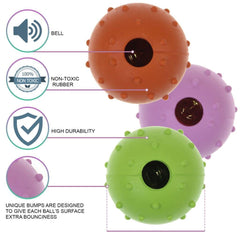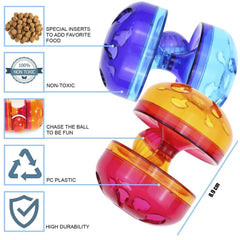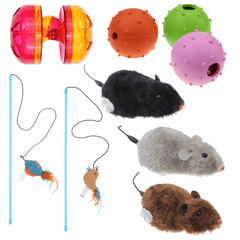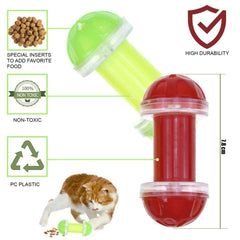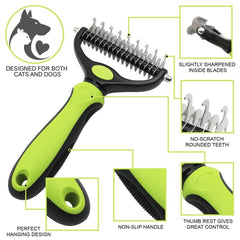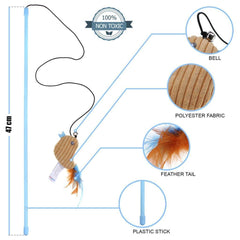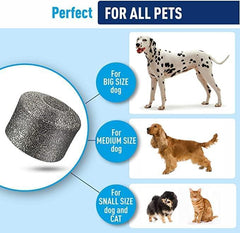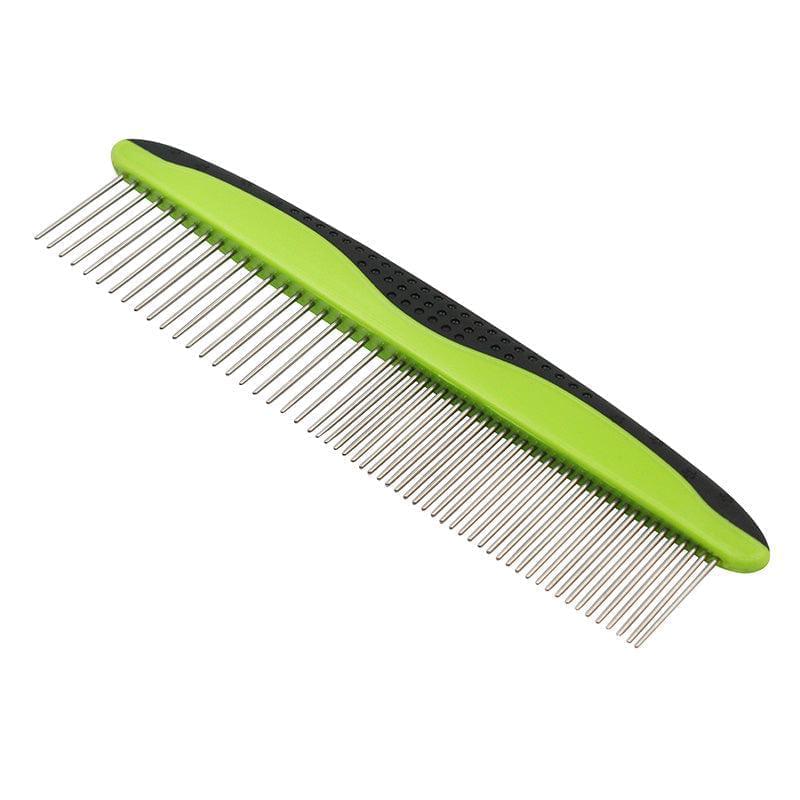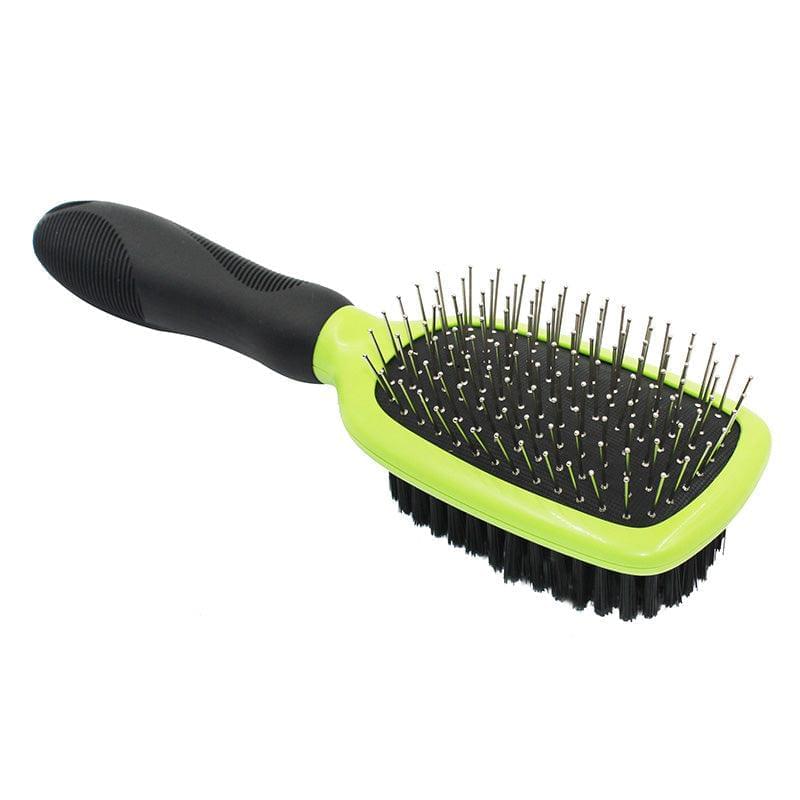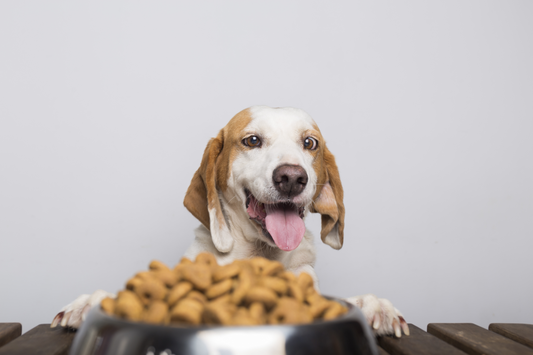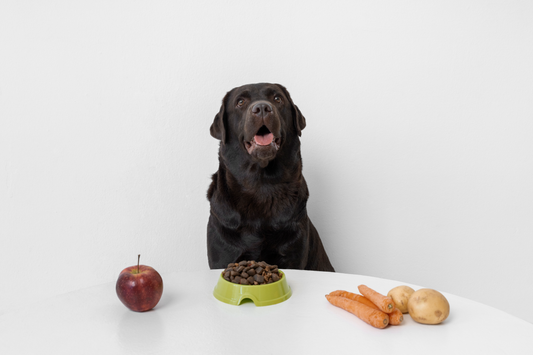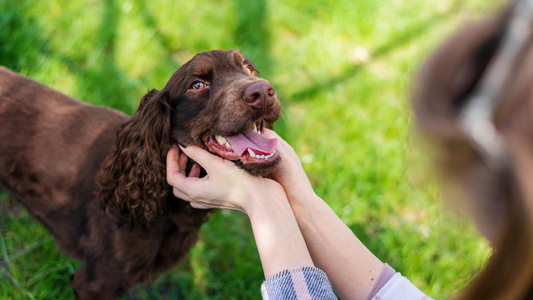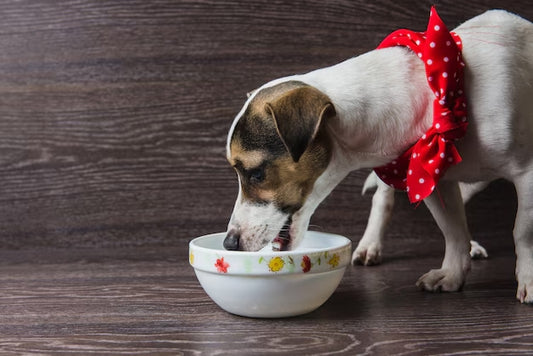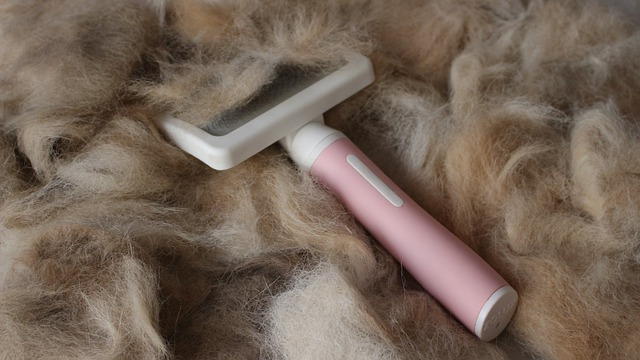 Are you a walking-talking hairball? Do you consciously avoid black clothes caue they end up not being - black? Well, it's time you put an end to this. You have to deal with your furry friend shedding loose fur all over you and your house.
Are you a walking-talking hairball? Do you consciously avoid black clothes caue they end up not being - black? Well, it's time you put an end to this. You have to deal with your furry friend shedding loose fur all over you and your house.There are several ways to deal with your dog's loose hair or even your cat's. For that, a few simple and reliable methods must be used while dealing with a shedding dog or cat. The best strategies to keep your dog's coat healthy and hair-free include:
- Regular brushing with the right brush.
- A high-quality diet with digestible protein sources.
- Fatty acid supplements.
Additionally, regular cleaning, allergy or flea management, and bathing your dog in the summer with a mild oatmeal shampoo can all help reduce shedding.
To remove loose hair from your pet's coat, it is crucial to select an appropriate brush. Use either a slicker brush, shedding blade, dog brush, bristle brush, and mat breaker to remove loose hair effectively. Keep in mind that the majority of pets need more than one kind of brush to remove all the loose hair.
The most popular tools for a shedding dog include a slicker brush and a furminator. In this blog post, we will find out the difference between the two. We will also discuss their pros and cons so that you can make an informed decision for your dog.
All About a Slicker Brush

A slicker brush comprises metal wires that help straighten your dog's coat and eliminate loose hair. These brushes include extra features like rubber nubs that can massage your pet during grooming.
As you brush your dog, the brush's flexible stainless steel bristles remove dandruff and dead hair from the coat. Some dogs may find the process uncomfortable, so you should choose one with softer bristles.
Important Note: Most veterinarians advise regularly brushing your dog when it is about three months old. How frequently you should brush your dog depends on the length and texture of its coat. For example, a dog with long hair will require more frequent brushing than one with short hair.
Additionally, brushing your dog after it enters the house is essential so that dirt and debris don't get lodged in its fur and cause inflammation or other skin issues. No matter what kind of coat your dog has, be sure to brush it with firm strokes. Many people assume that using excessively light strokes is suitable for their dogs. That is not correct because light strokes won't remove dead hair.
When choosing a slicker brush for your dog, pick one with tightly spaced bristles. These brushes remove dead hair while being easier on your dog's skin. These bristles are vital because stiffer brushes frequently aggravate already sensitive skin.
Select a slicker brush with a teddy bear or soft rubber tips rather than metal tines if you want additional calming effects.
How To Use A Slicker Brush?
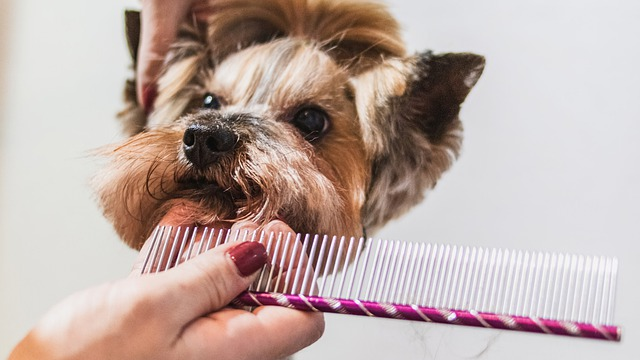
You don't just have to use a slicker brush to deal with the shedding issue. You have to make sure you use it right.
Using an up-and-down motion instead of small circular motions is common. Don't use too much pressure when brushing your dog because it might irritate and even harm the skin.
While grooming your dog, ensure they are comfortable and don't feel intimidated or uneasy. If they are, stop immediately until they are completely ready.
Furthermore, the whole process should take just a little bit of time. It should take about five minutes on each side of their body.
Don't forget to clean slicker brush before you start a grooming session for your dog.
When To Not Use A Slicker Brush?
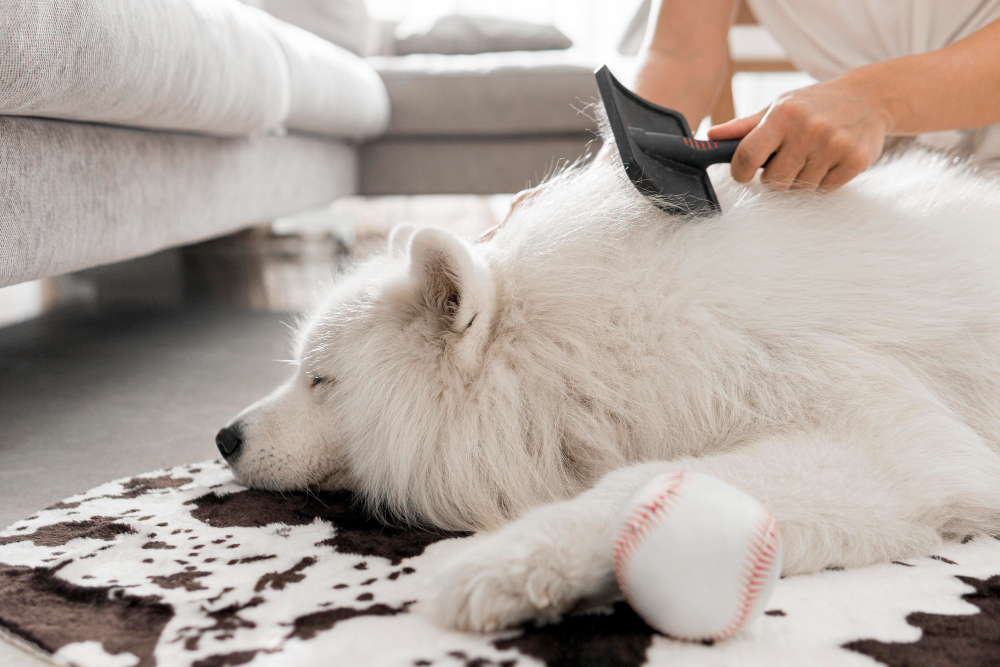
Some dogs can benefit from using a slicker brush alone to clean their coats, while others would require a shedding blade or comb in addition to the brush.
For dogs with long hair or thick fur, slicker dog brushes are common grooming equipment, but they should always be handled carefully. Be very careful while using slicker brushes on open wounds or skin irritations because they can harm your pet.
Choose a different kind of brush for your pet if it is sensitive or allergic to the brush's bristles, or speak with a veterinarian. Similarly, you will need a different kind of slicker brush for long-haired dogs. Try opting for pin brushes.
Important Note: Slicker brushes help eliminate loose hair and avoid knots but worsen existing matting. Before using a slicker brush on your pet's heavily matted fur, use a dematting tool or get expert grooming help.
Additionally, de-shedding your pet may result in additional irritation and bald spots if they are shedding heavily.
When brushing your pet with a slicker brush, be extremely cautious and gentle. Avoid using it when it can be uncomfortable or harmful. Get professional help as soon as possible if required.
Pros Of Slicker Brushes
Slicker brushes help remove tangles and loose hair from your pet's coat. Using a slicker brush when grooming your dog frequently has several advantages.
Since pets with long or thick fur are more likely to mat and shed, brushing with a slicker brush is crucial. A slicker brush's fine bristles reach deep within the coat to remove dirt, debris, and knots that could cause matting. This may decrease the amount of hair your pet sheds while keeping their coat healthy and shiny.
Secondly using a slicker brush helps encourage healthy skin and fur. Natural oils may be distributed throughout your pet's coat. Regular use of a slicker brush helps keep their skin and coat healthy and moisturized.
It also helps prevent dry skin, which can make your pet itchy and uncomfortable. A slicker brush may also help avoid skin irritation and hot spots by eliminating loose hair and dirt.
Important Note: These brushes can also be used on pets with various coat types, including those with short or medium to long coats. They can be used on delicate parts like the face, paws, and underbelly without causing any harm.
They are a fantastic option for pet owners because they are lightweight and easy to use. Slicker brushes are also cost effective for routine pet grooming because they are readily available and reasonably priced in different pet stores.
Cons Of Slicker Brushes
Slicker brushes are efficient for pet grooming since they promote healthy skin and coats and easily remove loose hair and tangles.
However, it's crucial to be aware of some potential drawbacks that come with it. These include skin irritability, discomfort if used incorrectly, and time commitment. So make sure you use the right pin brush on your dog's skin.
Slicker brushes should only be used carefully, and it is essential to be extremely gentle. Slicker brushes can be a valuable tool for maintaining the health and beauty of your pet's coat if you work around these potential drawbacks.
Quick Overview Of The Furminator

The furminator is a long-toothed, rake-like metal comb with a rubber handle. It penetrates your pet's topcoat to remove any loose hairs and undercoat hair.
The brush also includes a handy ejector button that easily releases the collected hair, making it extremely easy to clean.
The Furminator is available in various sizes and is appropriate for pets with varied types and lengths of coats. It's simple to use, and the ergonomic handle allows for a secure grip for the pet parent while grooming.
Veterinarians and pet owners frequently suggest the Furminator as grooming equipment. It can be used with other pet grooming accessories to maintain the health and appearance of a pet's coat.
How To Use Furminator?
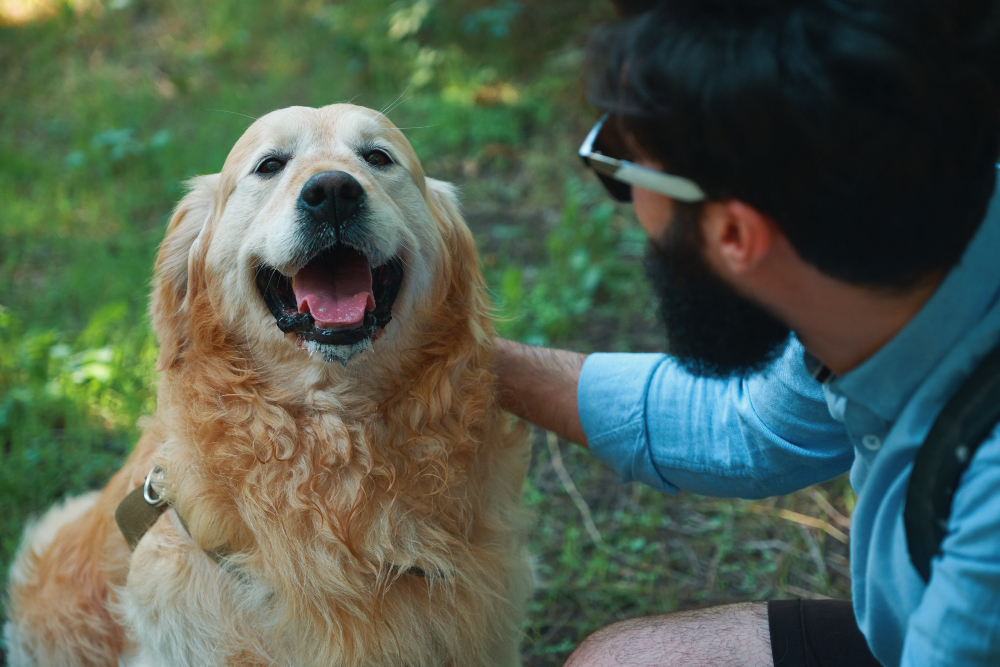
The first time you use a furminator, position your dog in a comfortable and familiar spot. It's normal for the Furminator to pull out more fur than usual during the first session, so don't be alarmed.
Brush the dog's back and sides in long strokes, beginning at the neck. Be careful to avoid bony areas like the spine, shoulders, and hips.
Roll your dog's body to one side and brush the stomach in the direction of fur growth. Avoid pushing too hard because this can irritate sensitive areas like the stomach. Instead, be cautious around these areas.
Once done with that side, roll your dog over and repeat the procedure on the opposite side. Award your dog a treat for its cooperation. This will create a positive association with the idea of a furminator and prevent your dog from acting out at the sight of a furminator.
Throughout the furminator session, remove fur from the device after every few strokes. This ensures that the brush remains effective and prepared for the next session.
When To Not Use It?
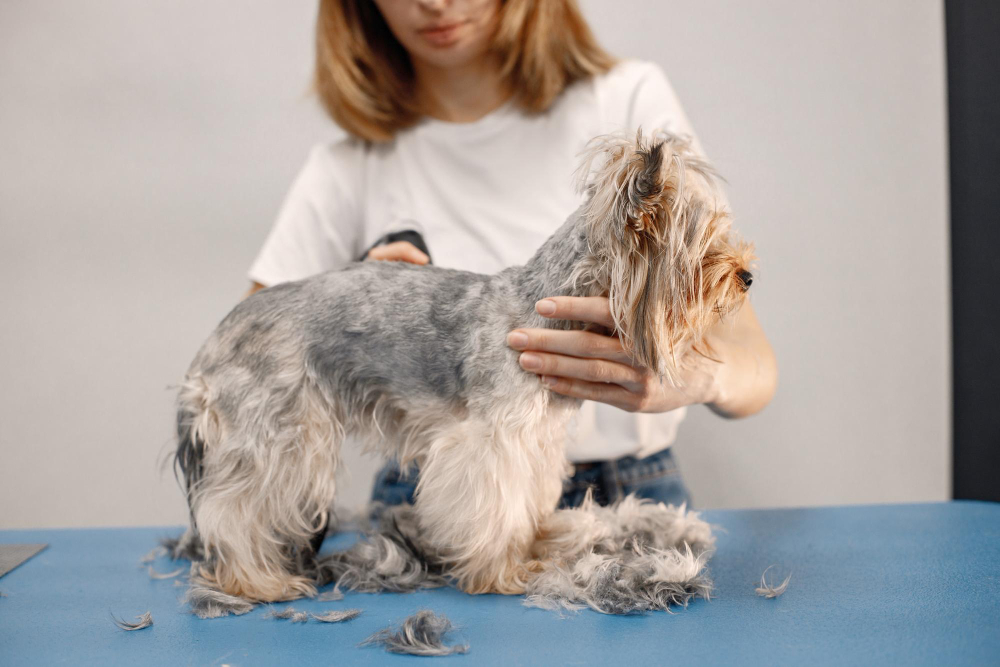
For grooming dogs with dense fur and a lot of shedding, the furminator is a helpful tool. But it's crucial to understand when to avoid using it.
For instance, dogs with short hair, skin irritations, excessively matted fur, or puppies with sensitive skin shouldn't be treated with the Furminator. In these circumstances, using the furminator may make the dog uncomfortable or even cause harm.
If you have questions about whether the furminator suits your dog, consult a veterinarian or trained groomer. You can contribute to maintaining the health and beauty of your dog's coat by using the furminator properly and avoiding situations where it shouldn't be used.
Pros Of The Furminator
The furminator is a well-liked dog grooming product with several advantages, making it a preferred option among pet owners. It has numerous benefits, one of which is that it lessens shedding, a problem many dogs have.
The furminator may drastically reduce the quantity of hair your dog sheds around your home by eliminating loose hair from the dog's undercoat, making it simpler to maintain a clean house. This can lessen the amount of hair that collects on your furniture and clothing, thus saving you time and money on cleaning materials.
The furminator also helps prevent skin irritation and matting, which can be uncomfortable and painful for your dog.
The furminator is an easy-to-use device that may significantly reduce shedding and encourage healthy skin and fur. Meanwhile, it also helps you save money on cleaning and dog grooming accessories.
The furminator is unquestionably a product to consider if you're searching for a technique to keep your dog's coat feeling and looking excellent after a grooming session.
Cons Of The Furminator
Even while the furminator provides numerous advantages for grooming dogs, there are some potential drawbacks.
These include the tool's expensive price, the necessity of routine cleaning to maintain efficiency, and the possibility that it may not work for all dogs, particularly short-haired dogs. Rather it's for dogs with beautiful and long coats.
Despite these negatives, many pet owners consider the furminator a valuable purchase that effectively reduces shedding and encourages healthy skin and coat. Your dog's needs and coat type should be considered before making the big purchase.
Final Words!
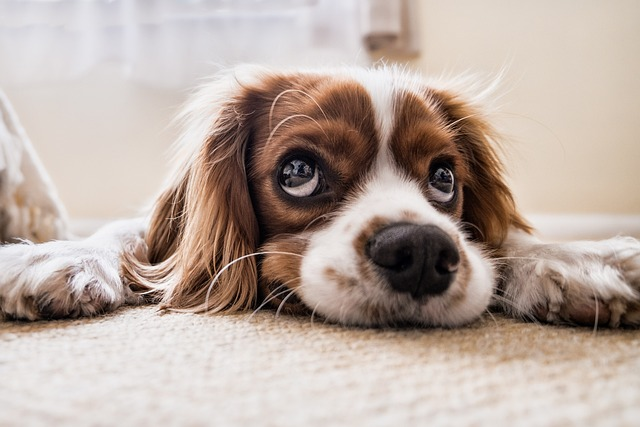
Both the slicker brush and the furminator are excellent grooming tools. However, which one you should opt for depends on your dog's fur type.
While the slicker brush is a safe option that may work with most dogs, a furminator is something you could benefit from if you have dense-coated dogs.
With the correct grooming routine, you can keep your dog's coat looking its best and enjoy your time with them without dealing with excessive shedding or matting.
So, slicker brush vs furminator - which would it be for you?
